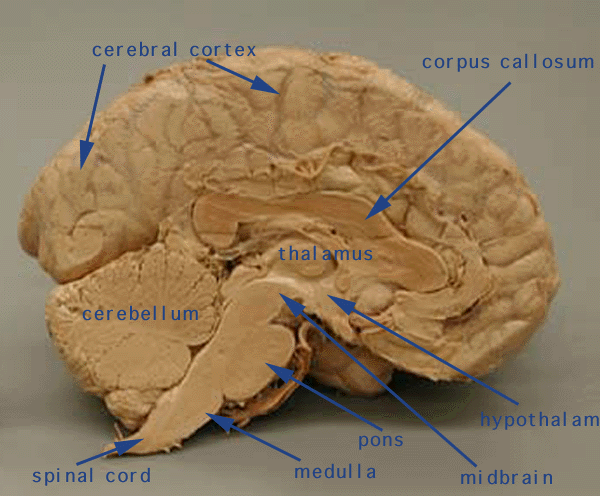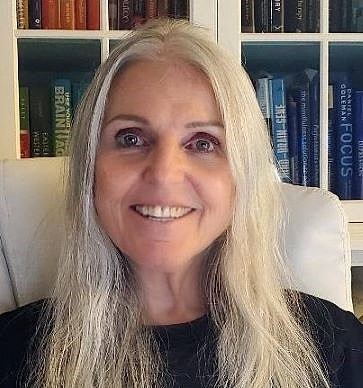How to Let Go of Conflict
 Letting go of a conflicted situation or relationship doesn’t have to be painful or difficult.
Letting go of a conflicted situation or relationship doesn’t have to be painful or difficult.
When you think you of the conflict’s content as the meaning or purpose of the conflict then it will be difficult. Sometimes the content simply can’t be overlooked, such as infidelity, or teen drinking, and we know how much pain that causes.
When you think of conflict as an opportunity, an opening moment to connect in another way to your self or another or to a different situation or perception, it changes the experience and meaning of the conflict. The conflict speaks of unseen energies and has broader implications than the content. Here, conflict is giving you another direction from which to consider your next move.
In this way the conflict serves the purpose of awakening our mind to look beyond what is the external struggle at hand, and asks what is the personal communication from our own intuition, or from a Higher Power of a spiritual nature. The conflict becomes a springboard for growth. Letting go of it and perhaps feelings of gratitude will naturally follow. If not, you are only focusing on the content .
Consider for a moment the I Ching hexagram 45 when interpreted by the deep thinking poet and artist Carolyn Mary Kleefeld. My interpretation is in [ ].
In her book The Alchemy of Possibility, Kleefeld describes the meaning of this hexagram as there ” being secret forces [meaning hidden from view, also called the subtle realms] at work, leading together those who belong together. We must yield to this attraction; then we make no mistakes. Where inner relationship exist, no great preparations and formalities are necessary.”
The truth stated here gives me great peace to trust and let go of the conflict; to follow the path of least resistance which leads to alignment within and without. ” Where inner relationship, [meaning alignment with our highest self, or Soul, on our path] exists, no great preparations [putting on a new face, changing our essence, hiding our light, playing small] and formalities [rules and beliefs given or force on us that we don’t resonate with our highest expression of self] are necessary.”
Know from deep within your true nature that the conflict is communication to awaken and lead you, so listen. Stop, take a breath, quiet your mind and listen within. If you are more visual than allow your imagination to speak to you. Go forward from that place.
Kleefeld writes “To be more than relationship technicians we need to experiment with our own beings as reference…. Why be a copy machine of unchosen material? …May we create relationships as we would create art, continually reinventing ourselves in the process, using our imaginations rather than society’s stereotypes to express our ideals.” (pp.210-202)
18 Fascinating Books
 In the different arenas I work in, coaching, teaching, private practice, meditating, I’m often asked for book suggestions. I’m happy to share those I have found helpful.
In the different arenas I work in, coaching, teaching, private practice, meditating, I’m often asked for book suggestions. I’m happy to share those I have found helpful.
In this post I’m sharing books that fall into different categories than the usual. I loved reading and that opened my eyes, mind and heart. Most aren’t the ones usually seen in a list put together by a psychologist’s, but don’t be deceived by their common absence. It’s a menagery of deep reading. There are a couple novels, poetry non-fiction, creativity, on meditation, NDE’s, some science based books, some spiritually based books and others. I hope one or two will be inspiring to you or just a great reading experience!
Poetry:
Journey of the Soul by Gary Munn
Alchemy of Possibilities by Carolyn Kleefeld
Fiction:
Now is the time to Open your Heart, by Alice Walker
The Art Forger by B.A. Shapiro
Creativity:
Writing to change the World by Mary Pipher
SoulFire, accessing your creativity by Thomas Ryan, CSP
Meditation:
Real Happiness: the power of meditation by Sharon Salzberg (Buddhist meditations)
Meditation for the Love of It by Sally Kempton (Yoga meditations)
Near Death Experience:
Dying to Be Me by Anita Moorjani
Science based:
The Biology of Belief by Bruce Lipton
Stroke of Insight by JillBbolte Taylor
Use your Brain to Change your Age by Daniel G. Amen, MD
Spiritually based:
The Practical Visionary by Corine McLaughlin and Gordon Davidson
Tao Te Ching by Lao Tzu – any translation
When the Soul Awakens by Nancy Seifer and Martin Vieweg
There’s a Spiritual Solution to Every Problem by Wayne Dyer
Non-fiction :
A New way to Be Human by Robert Taylor
Age of Miracles by Marianne Williamson
______________________________________________________
Enjoy reading and let me know what are your favorite books in the comments below.
Namaste,
Dr. Kim
Mapping the Brain to Uncover the Mystery
 The recording and mapping of the brain in action has begun! It didn’t take long to get funding after the discussion to map the brain began at a conference in 2011. The project’s title is an acronym, say it- BRAIN. Brain Research through Advancing Innovative Neurotechnologies.
The recording and mapping of the brain in action has begun! It didn’t take long to get funding after the discussion to map the brain began at a conference in 2011. The project’s title is an acronym, say it- BRAIN. Brain Research through Advancing Innovative Neurotechnologies.
“The effort will require the development of new tools not yet available to neuroscientists and,eventually, perhaps lead to progress in treating diseases like Alzheimer’s and epilepsy and traumatic brain injury. It will involve both government agencies and private institutions,” John Markoff and James Gorman write in the New York Times today.
President Obama is calling this the grand challenge 21st century. Private institutions and three government agencies, the the National Institutes of Health, the Defense Advanced Research Projects Agency and the National Science Foundation will come together, and a “dream team,” and led by Cori Bargmann of Rockefeller University and William Newsome of Stanford University, will be charged with coming up with a plan, a time frame, specific goals and cost estimates for future budgets.”
100 million dollars will start the project in 2014 with further funding coming in as they proceed. This first funding will spur research “to invent and refine new technologies to understand the human brain.” One goal is to facilitate a paradigm shift in how we study and understand how the human brain works. Advances in neuroscience and technology beyond our imagination at this time will lead the way. Currently for example, the measuring instruments are unable to measure the complexity and enormity of all the neuronal firing that goes on in the working brain.
I can’t avoid the sense of excitement about the involvement of women in lead positions in this movement. There are two are mentioned in this article. Miyoung Chun, a molecular biologist who is vice president of scientific programs at the Kavli Foundation, organized the conference where this idea began. Chun believes that the greatest benefits and discoveries will come from interdisciplinary fields coming together, and so gathered neuroscientists and nanoscientists in London in September 2011.
Scientific Researcher Cori Bargmann, PhD, co-leading the dream team is a woman. She received the 2012 Kavli Prize in Neuroscience, the 2012 NYU/Dart Biotechnology Achievement Award, the 2009 Richard Lounsbery Award from the U.S. and French National Academies of Sciences, the 2004 Dargut and Milena Kemali International Prize for Research in Basic and Clinical Neurosciences, the 2000 Charles Judson Herrick Award for comparative neurology.
6 Mindful Ways to a Happier Marriage
 A study ( Burpee and Langer, (2005*) was designed to find out if there was a relationship between mindfulness, similarity to the partner and marital satisfaction. The researchers wanted to know specifically if mindfulness mattered and if so, how much did it contribute to a happy marriage. So they gave a questionnaire and a mindfulness measure to 55 women and 40 men, ages 25 to 74, who were currently married.
A study ( Burpee and Langer, (2005*) was designed to find out if there was a relationship between mindfulness, similarity to the partner and marital satisfaction. The researchers wanted to know specifically if mindfulness mattered and if so, how much did it contribute to a happy marriage. So they gave a questionnaire and a mindfulness measure to 55 women and 40 men, ages 25 to 74, who were currently married.
Mindfulness was defined as an active process of drawing novel distinctions between the spouses and having a heightened awareness of alternative perspectives. I take it to mean assuming a mindful perspective toward marriage highlights the uniqueness of each person and foster an open-minded acceptance of the different perspectives that result from each individual.
It turned out mindfulness was far more important to marital satisfaction than how much they shared in common. In fact, perceived similarity didn’t even hit the line of significance.
The study got me to thinking what is the take-away from this study in practical terms. Here are my thoughts based on their findings. Please share yours in the comments section.
1. Celebrate your differences. See the value in having different points of view. There’s probably a few you can name when you look at the situation with curiosity, without prejudice and an open-mind. The differences keep things interesting. Two intelligent minds can be better than one when you need to solve problems.
2. Bring novelty to the relationship by doing different things together and apart. Remember that liking similar things did not correlate with a happy marriage.
Novelty doesn’t have to always be entirely new things, but variations of what you normally do. For example, cooking or eating a meal at a restaurant that you’ve never had before, seeing a totally different movie or concert, read each other’s favorite magazine and then in each of these instances, have a meaningful conversation about your experience afterward.
3. When conflict is of a more intense nature, discuss the details of each of your points of view to provide your partner a clear understanding of your perspective at this point in time. The partners in a mindful relationship remember not to let what was once true get in the way of what is currently true. It’s easy to slip into automatic thinking or mindlessness. Here you make assumptions that you know what they “really mean” and stay in a conflicted state that may not exist. Actively listen and consider your spouse’s existing of point of view.
4. Take responsibility for your state of being by regularly asking yourself if you’re in a mindful or a mindless state of relating. If it’s the latter, shift your attention into the present by focusing on your breath for a minute and observing what is actually happening in that moment in you. Stay in that space until you are focused in the present in the moment. Then you can be open and attentive to what your partner is saying and in choosing your response.
5. Be open to and engage with your partner when they share something with you. Everyone likes to feel they are heard, known and seen for who they are.
6. Change is the nature of life. Mindful partners are less threatened by change and see the current contexts of situations in their relationship and partner.
*Burpee, Leslie C., and Ellen J. Langer. 2005. Mindfulness and marital satisfaction. Journal of Adult Development 12, no. 1: 43-51.
http://nrs.harvard.edu/urn-3:HUL.InstRepos:3160495
Love You More
Humor me and do this brief exercise as you read it.
 Lace your fingers together, thumbs overlapping and hold your hands tightly together. Squeeze a little tighter. Look to see if there are any spaces and if so adjust your hands to close them up.
Lace your fingers together, thumbs overlapping and hold your hands tightly together. Squeeze a little tighter. Look to see if there are any spaces and if so adjust your hands to close them up.
Do you feel tension in your hands, fingers, wrists and arms? Has the grip stopped your blood flowing near the knuckles? Hold it a bit longer to get the full experience in your present awareness.
Next, loosen your grip… more while keeping your fingers laced and thumbs crossed or touching. Notice all the positions your hands can from and still be interlaced together to a greater or lesser degree.
Is there any feelings tension in your arms, wrists, hands in these positions? Notice which positions felt good or relaxed.
Keeping your hands interwoven, push your palms forward and pointing away from you until your arms can stretch no further. Not letting go, gently move them up over your head and feel that stretch that feels so good.
Now move them to one side, circling down or over to the other side. Do it a few times if it feels good, but don’t let go. Notice the comfort, energy and warmth in your body in these positions. Notice your mind noticing your hands gliding in unison and harmony which allows your body to keep your balance. Your mind and body are moving with purpose and connected together at your hands.
You can let go now, have a seat, and ask yourself:
Which grip was most satisfying, the tight or the light one?
Which position was most sustainable, the clenched palms, hands and arms or the interlaced but stretched position? Did you prefer moving your body, staying still or something in-between?
There are no right or wrong answers. Let this body awareness metaphor serve as an anchoring image for you from time to time, by bringing your mind into the present moment, informing you of how good connecting (interlacing of fingers symbolizes connecting with another) feels when it’s open and spacious, allowing energy in and out. It also reminds you how a tight grip, a controlled hold on another leads to pain, stress and burnout.
As Rumi said “Your task is not to seek for Love, but merely to seek and find all the barriers within yourself that you have built against it.”
Maybe this post’s title should read “Love ME More, then I will let more love in.”
Open up, connect, loosen your grip, move about, feel good, love the balance and energy that comes from unclenching. Stand with a mindful awareness in this field of existence to connect and receive, whether it’s for a handshake or a lifetime.
Are you Searching for Love Online? It can take a toll on emotions, time and energy. If you would like assistance and support in finding the right love match for you through online dating sites, I offer profile writing, profile searching and suggest, and short term coaching to women and men over 50 who are seeking to find a serious relationship or marriage.
Scared to Meditate Alone, reason #3 why people stop after class ends
This is number three of five posts explaining the five common reasons I believe people stop meditating when their how-to class is over.
To review, the first is that it’s tough to stay motivated when each session it is difficult to get going alone and the rewards are felt less often. The second is that people procrastinate and don’t find the time often enough resulting in their intention to practice ceasing to motivate them. Once the intention is forgotten, bringing their awareness to meditating most likely will end to.
 Today I’ll talk about how some people become scared of the silence or feel unsure of how to proceed and don’t want to try again or alone. This is really two reasons in one, but they can overlap under the salient feeling of being scared.
Today I’ll talk about how some people become scared of the silence or feel unsure of how to proceed and don’t want to try again or alone. This is really two reasons in one, but they can overlap under the salient feeling of being scared.
Some people are so used to noise, sounds, people, the environment they built to live in, they find silence to be, well, an unknown and by definition, unknowns can make a person feel afraid and cautious. A Do Not Enter Here sign can go up inside their mind. They want music in the background, or a guided meditation, or a DVD to feel safe and comfortable.
These are fine for relaxation purposes and for distraction. I’m ok with people learning to get into regular practice using partially guided meditation CDs, that have long pauses of silence on the track if this helps them get over the hump. But for meditation to change and improve your mind, body and brain health, silence is golden.
Ask people and monks who meditate long hours each day for years on end if they want background guidance or music? They would tell you, as do I in my limited experience, silence is a symphony of sounds. I crave the silence and so will you.
The second part of obstacle number 3 is not knowing how to proceed when meditating alone. Again, using a partially guided meditation CD temporarily in the beginning is fine as long as you intersperse silence and going it alone between the CD guidance. Try using a similar induction as the CD teacher uses, more or less. Memorizing anyone else’s induction is not necessary.
Instead for example, decide that you are going to practice concentration meditation today, and find something near you to fix your focus one. A candle flame, a mandala, your breath, or a mantra are all good focus points. Pick one and focus on it for five, ten or twenty minutes, bringing your full attention gently back to it when your “monkey mind” takes over. This way is not being as alone as some of the other meditation practices.
Once you find your way of getting into the silence you’ll still tweak it as time goes on, as you grow and learn more about meditating. It’s a skill we continue to learn, like playing a musical instrument. That’s why it’s called a practice throughout your life.
Keep in mind, dear perfectionists, no one is grading you pass/fail. No one knows how you are doing. This is by definition a singular experience of alert focused awareness. Simply and gently try what you do know so far and let things fall into place as you go along open and receptive.
Your inner mind and body want to be healthy through and through. When you are sitting still in the silence with your mind as quiet as it can be in the moment, let your inner wisdom lead the way.
For my upcoming classes on how to meditate for your health click HERE. They begin beginning Jan. 28, 2013 and preregistration is required.
Mindfulness and Suicide
 Hardly a week goes by that suicide isn’t mentioned on the news. There seem to be two predominant groups of people in which suicide is occurring at an alarming rate: Soldiers and young adults.
Hardly a week goes by that suicide isn’t mentioned on the news. There seem to be two predominant groups of people in which suicide is occurring at an alarming rate: Soldiers and young adults.
The news recently reported that now more men and women soldiers have died at their own hand than on the battle field. This figure included suicides while on deployment and after returning home. A soldier is a soldier no matter where he or she may be. The ravages of being in war, in theater, seeing those around you wounded and killed, fear and or uncertainty ever present can change a person’s brain functioning and emotional make-up forever. Now combine this with the emotional and mental characteristics of the person before they went to war and the picture and complexity are apparent.
Second in my opinion are young adults, aged 17, 18- mid-20’s. Often they are working in the arts, music, acting, or in college. We know hate and bullying are named as causes in some cases, by the victim himself or by suggestion from others. Drugs, alcohol, loneliness, depression, loss of parental support and love, fear, sexual orientation, self-loathing and mental illness are other recognized factors in the larger picture.
So what part can mindfulness serve in this tragic choice made by people who feel desperate beyond despair and believe there is no other way out? Can you guess? It relates to us, not them.
Our being mindfully aware of someone we care about to the extent that we notice changes in their actions, dress, energy level, interests, odd statements they make, comments that include suicide or words to that effect, are indicators of what your loved one is dealing with in this moment. Of this and this alone you can be mindfully aware. You can’t know what they will do or won’t do in the next moment. Rather than make a judgment, talk with them.
With your current awareness of them in mind, you can ask them a question or two to show you are noticing. You can tell them you are here for them if they need someone to talk to. In some cases you can guide them to get help. Other times you can help at level you and they see fits; the adult person still has free will. Getting a trained mental health person or their authority figure involved is always a good idea when you are able to move the person in that direction.*** Call the police if you know they have a plan for how they will commit suicide and the means to carry it out. The police will take the person to an appropriate hospital for a 72 hour hold to keep them from harming their self while also being evaluated and possibly treated as necessary. This is the best chance they have of not making things worse at this irrational time in their life.
Sharing your mindful awareness of someone with them will feel more important to them than you might imagine. Take for example, the person who is feeling isolated, ashamed, less than, invisible. Your attention to noticing something has changed in them can feel like a yearned for connection and caring. I imagine it as a beam of light and love, like shining forth from a lighthouse over the ocean. When Your attention is placed on another free of judgments and a reliving of past circumstances, it may open their closed door just a crack, and that may be enough for a necessary next step to happen.
Mindfulness and suicide are not normally thought of in the same sentence. There is personal power mindful presence affords us. Being current and aware, open and non-judgmental in the company of another whose current words and actions alarm us because we hear, see or feel signs of distress, changes for the worse, or thoughts and actions with suicidal ideas is the overlap of these two states of mind. This is where mindfulness of one human toward another might be the difference that’s needed in that moment.
***The National Suicide Hotline number is 1-800-SUICIDE Suicide Risk Assessment for teens and young adults
Staying Motivated to Meditate Regularly
 Winter/spring 2013 classes starting in Ventura, click here for details and registration, scroll down for cataloge image & instructions to sign-up.
Winter/spring 2013 classes starting in Ventura, click here for details and registration, scroll down for cataloge image & instructions to sign-up.
In the last post I gave you five common reasons people stop meditating when class is over. The first one was that people find it tough to stay motivated when each session they sit for is difficult to get going and the rewards are not felt every time.
#2. You procrastinate and don’t find the time often enough so your intention to practice stops bringing your awareness to the intention you had when you began the class.
Once you discover that your practice is effective for you and you feel the benefits and confidence to keep going, you can go it alone with more ease and continuity. You’ll stick with it even when it’s a tough one to get into knowing that the good is happening anyway, in your brain and your body.
Procrastinators judge themselves harshly. Often people procrastinate because they don’t feel the meditation practice is going well or feeling like they think they should. they begin to feel worse instead of better because of the judgment and an unmet goal they set, not because of the meditation itself.
Not finding time is an excuse. People find time for what is important to them. Even if the duration of a daily session is 5, 7, or 10 minutes, regularity brings results sooner. So keep at it and don’t think you are doing it wrong. There is no such thing.
Being present to the now each moment you are meditating is a goal you can accomplish. My next 5 week how-to-meditate series begin in January 2013.
Meditation for Mind & Body Health 5 Week Class.
Click on the title above for more information about the series.
If you prefer a small class you’ll want to take it at my office. I’m taking registrations now, class size is limited to 6 adults. The starting date will be as soon as we have 5 or 6 people, so email me your name and phone and I’ll put you on the list. We’ll meet Monday evenings 5:30-6:30 most likely. I will consider holding a morning class if there is interest.
If you want to be in a larger group, you’ll find the City of Ventura Community Ed class the best one for you. It begins Jan. 28, Mondays 7:30-8:30. The series repeats 3 times, so you can choose when you prefer to begin the class. They run through May in Ventura. Registration begins online Jan. 2 at cityofventura.com or by phone.
Sign up for my newsletter to hear about new classes on various topics. Starting in January I’ll also be teaching Mindful Eating for Weight Loss, Successful Unstressful Home Office, and in February, Mindful Solutions for the Relief of Chronic pain.
Namaste,
Kim
5 Reasons Meditating Ends
Beginning meditation is the toughest part. I mean this in two ways. Beginning a meditation session and beginning your practice of the art of meditation. Meeting in a  group, especially with instruction and Q&A time for tweaking your experience, makes moving past the beginning procrastinations more likely to occur. How can you keep your practice going?
group, especially with instruction and Q&A time for tweaking your experience, makes moving past the beginning procrastinations more likely to occur. How can you keep your practice going?
You might be surprised to know it is the regularity of practicing meditating, more than the frequency or length of a session that will lead you to the benefits faster. Changes in mood, compassion, stress and mental clarity are reported, or made evident in studies, within 8 weeks of meditating for 20 to 45 minutes each day.
At first you might aim for 5 to 10 minutes, setting your phone alarm or another timer so you can let go and not worry about the time. Once you are able and ready to lengthen the time I find people enjoy it much more because they get more out of it. Anywhere from 20-45 minutes, 30 is fine, work the best for most people. This is because it takes about 10 minutes, 15 on a super stressful day, to get into the stillness. This beginning period of mental chatter and calming them down is a natural part of each meditation for the majority of people, so include it in your time. If you can’t get past that period, don’t give up. Some days are better than others. Anyway, it is still providing some relief toward de-stressing your body and mind.
My goal, as your teacher in a class or in therapy, is to help you to integrate meditation into your lifestyle 5 to 7 days a week. This means finding the right type of meditation for your purposes, doing it at the right time for you, and in the best location for you to have a silent period of time.
These are five common reasons people stop meditating when class is over:
1. It’s tough to stay motivated when each time it is difficult to get going and the rewards are felt less often.
2. You procrastinate and don’t find the time often enough so your intention to practice stops bringing your awareness to the intention you had when you began the class.
3. You get a scare or feel unsure of how to proceed and don’t want to try again or alone.
4. You only practice the type of meditation that comes easiest for you, and your brain isn’t stretched and used as well as it could be.
5. You get bored doing the same kind of mediation.
In my next blog posts, I’ll talk about each of these 5 meditation stoppers and offer you some ways to get around them to keep your practice going.
Releasing Suffering from Pain through the Creative Process
Today I read about a woman named Deb who uses painting to release her from the choke hold chronic pain had on her since a car accident occurred some time ago. She releases her suffering through the creative process to shift her awareness of what’s happening around her.
I think Deb’s story describes the great equalizer creativity is. We are naturally creative people, each in our unique way. We can learn to improve our skills various forms of creativity, but creativity is a human process, and it’s in all of us.
When you are expressing your natural Self you can feel the flow and get energized by it. Your perspective widens, you naturally open to it to let more flow through you and resistance decreases naturally until your rational, egoic, fearful, negative or judging mind kicks in. Resistance to recognizing or engaging in the creative process doesn’t mean it isn’t within you ready and available.
Distraction from pain can reduce the suffering you experience. Being creative served as a distraction for Deb. Your pain is more or less perceptible while in the creative process, but your suffering is greatly reduced when your attention is in the flow of the creative process. When your senses focus on, as in Deb’s case, painting, this takes center stage in your neuronal circuitry’s processing and other sensory impressions, such as pain, take a backstage presence. When it rears its head, you can use your mindful focus by returning your attention to the art form you’re engaged in as you ride the wave of pain on another level.
Mindfully approaching pain to broaden the awareness of the vastness around you reduces suffering in the same way. Engaging in something creative provides both the distraction and the focus of attention, and suffering decreases.
That’s not to say it’s easy. Using the creative process to approach life and relieve pain takes intention, focus and a commitment to not give-up or give-in just as Deb said, and still not everyone in pain will find creativity is the answer for them.
Find out about my upcoming 8 week class on how to use the mindful approach to relieve chronic pain, starting soon at the Pain Specialty Center of Ventura.
I believe practicing creativity of any kind(s) on a regular basis is necessary for a happy and balanced life. Being creative engages your whole brain, which builds and strengthens a web of connections that quickly access your whole brain in other situations that benefit from a broader view such as when analyzing problems, making decisions, coping well under stress, and when needing to think outside of the box. The now popular phrase “Neurons that fire together wire together” is applicable here.






